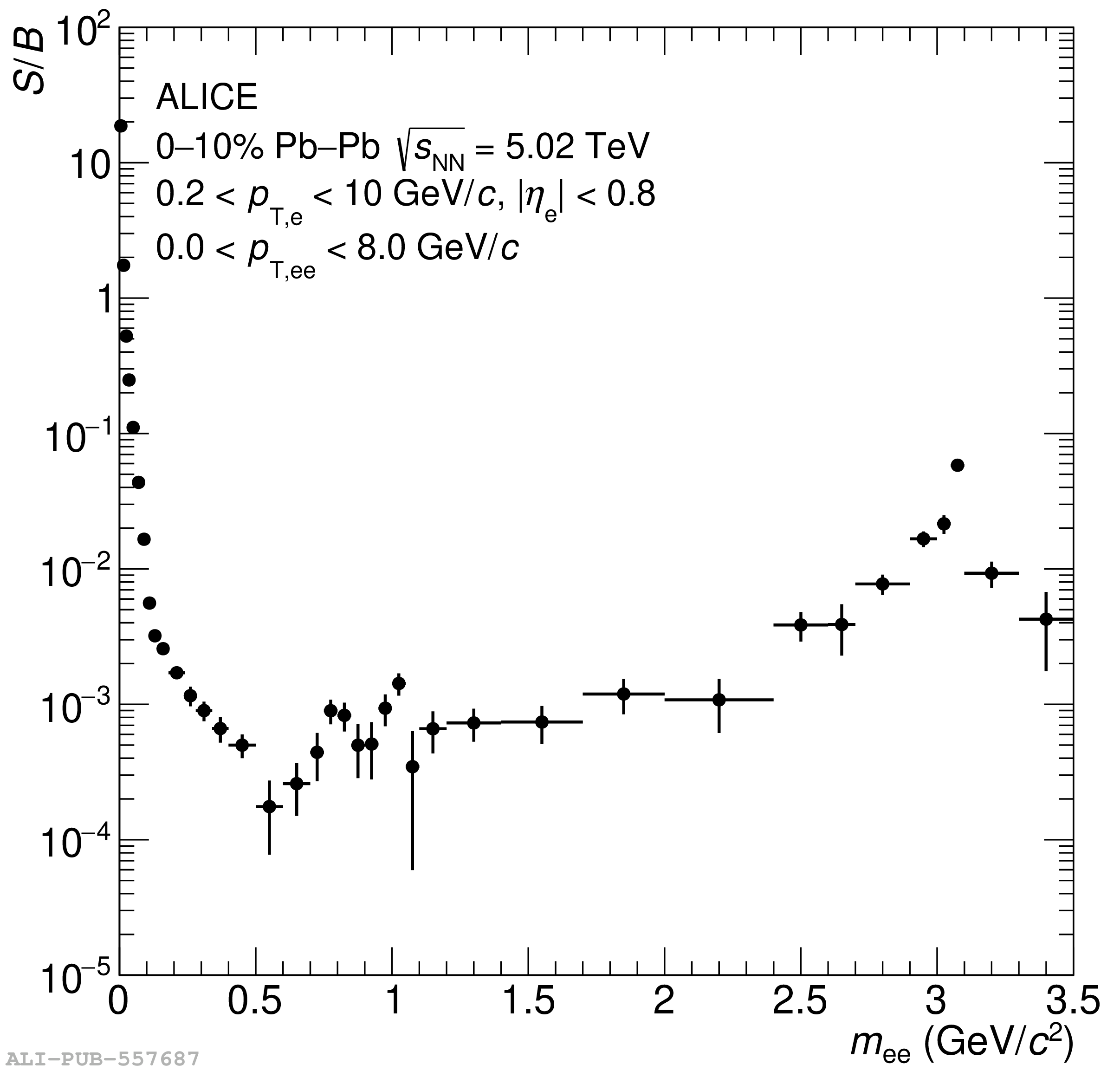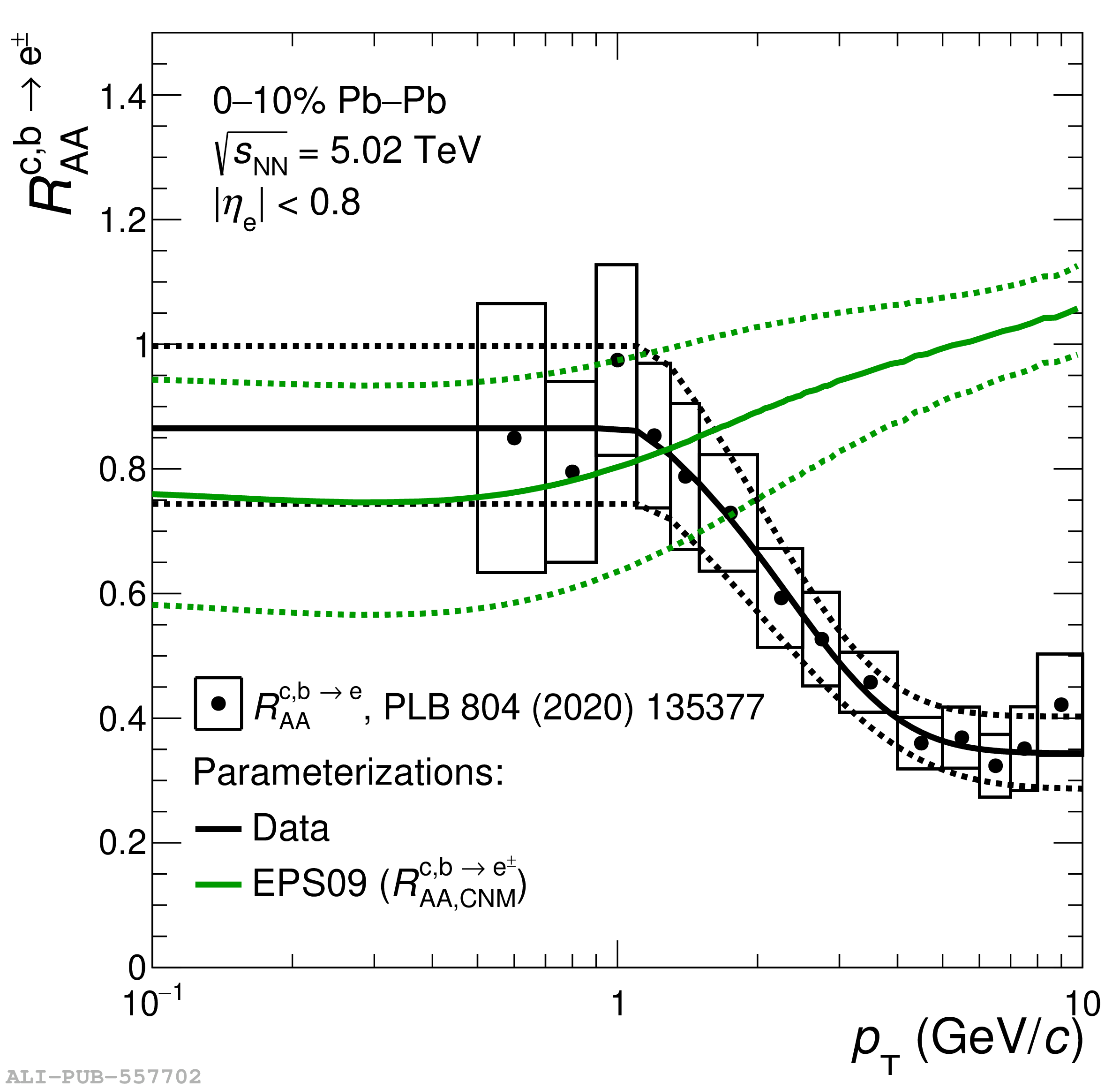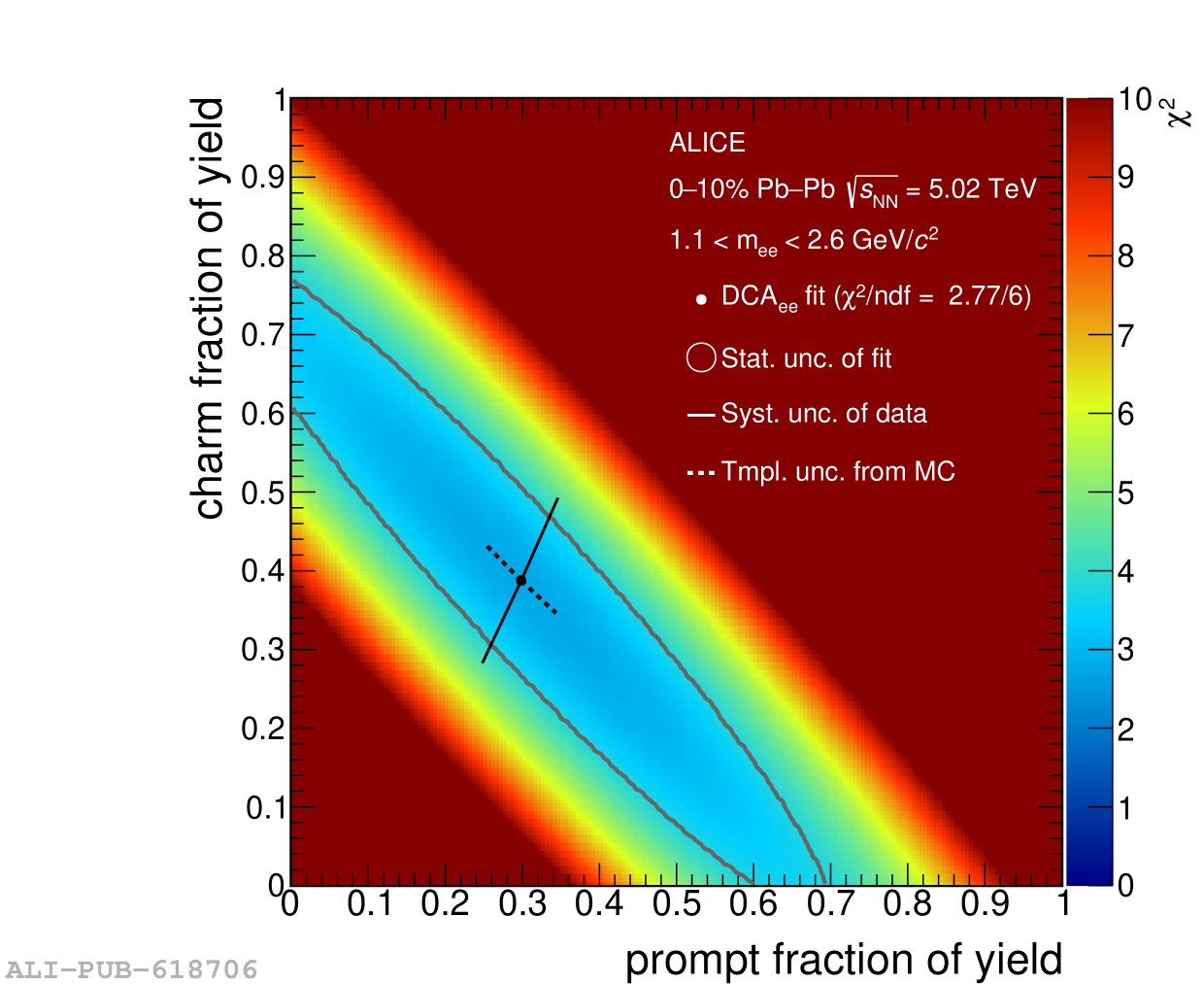The first measurement of the e$^+$e$^-$ pair production at midrapidity and low invariant mass in central Pb$-$Pb collisions at $\sqrt{s_{\mathrm{NN}}}=5.02$ TeV at the LHC is presented. The yield of e$^+$e$^-$ pairs is compared with a cocktail of expected hadronic decay contributions in the invariant mass ($m_{\rm ee}$) and pair transverse momentum ($p_{\rm T,ee}$) ranges $m_{\rm ee} <~ 3.5$ GeV$/c^2$ and $p_{\rm T,ee} <~ 8$ GeV$/c$. For $0.18 <~ m_{\rm ee} <~ 0.5$ GeV$/c^2$ the ratio of data to the cocktail of hadronic contributions amounts to $1.40 \pm 0.11 \ ({\rm stat.}) \pm 0.23 \ ({\rm syst.}) \pm 0.16 \ ({\rm cocktail})$ and $1.42 \pm 0.11 \ ({\rm stat.}) \pm 0.23 \ ({\rm syst.}) ^{+0.24}_{-0.29} \ ({\rm cocktail})$, including or not including medium effects in the estimation of the heavy-flavor background, respectively. It is consistent with predictions from two different models for an additional contribution of thermal e$^+$e$^-$ pairs from the hadronic and partonic phases. In the intermediate-mass range ($1.2 <~ m_{\rm ee} <~ 2.6$ GeV$/c^2$), the pair transverse impact parameter of the e$^+$e$^-$ pairs (DCA$_{\rm ee}$) is used for the first time in Pb$-$Pb collisions to separate displaced dielectrons from heavy-flavor hadron decays from a possible (thermal) contribution produced at the interaction point. The data are consistent with a suppression of e$^+$e$^-$ pairs from ${\rm c\overline{c}}$ and an additional prompt component. Finally, the first direct-photon measurement in the 10\% most central Pb$-$Pb collisions at $\sqrt{s_{\mathrm{NN}}}=5.02$ TeV is reported via the study of virtual direct photons in the transverse momentum range $1 <~ p_{\rm T} <~ 5$ GeV$/c$. A model including prompt photons, as well as photons from the pre-equilibrium and fluid-dynamic phases, can reproduce the result, while being at the upper edge of the data uncertainties.
Phys. Rev. C 112 (2025) 054906
HEP Data
e-Print: arXiv:2308.16704 | PDF | inSPIRE
CERN-EP-2023-194
Figure group





























